Is Kenwood the new KitchenAid? Bakers answer the great cake debake
Let's get to the soggy bottom of this debate
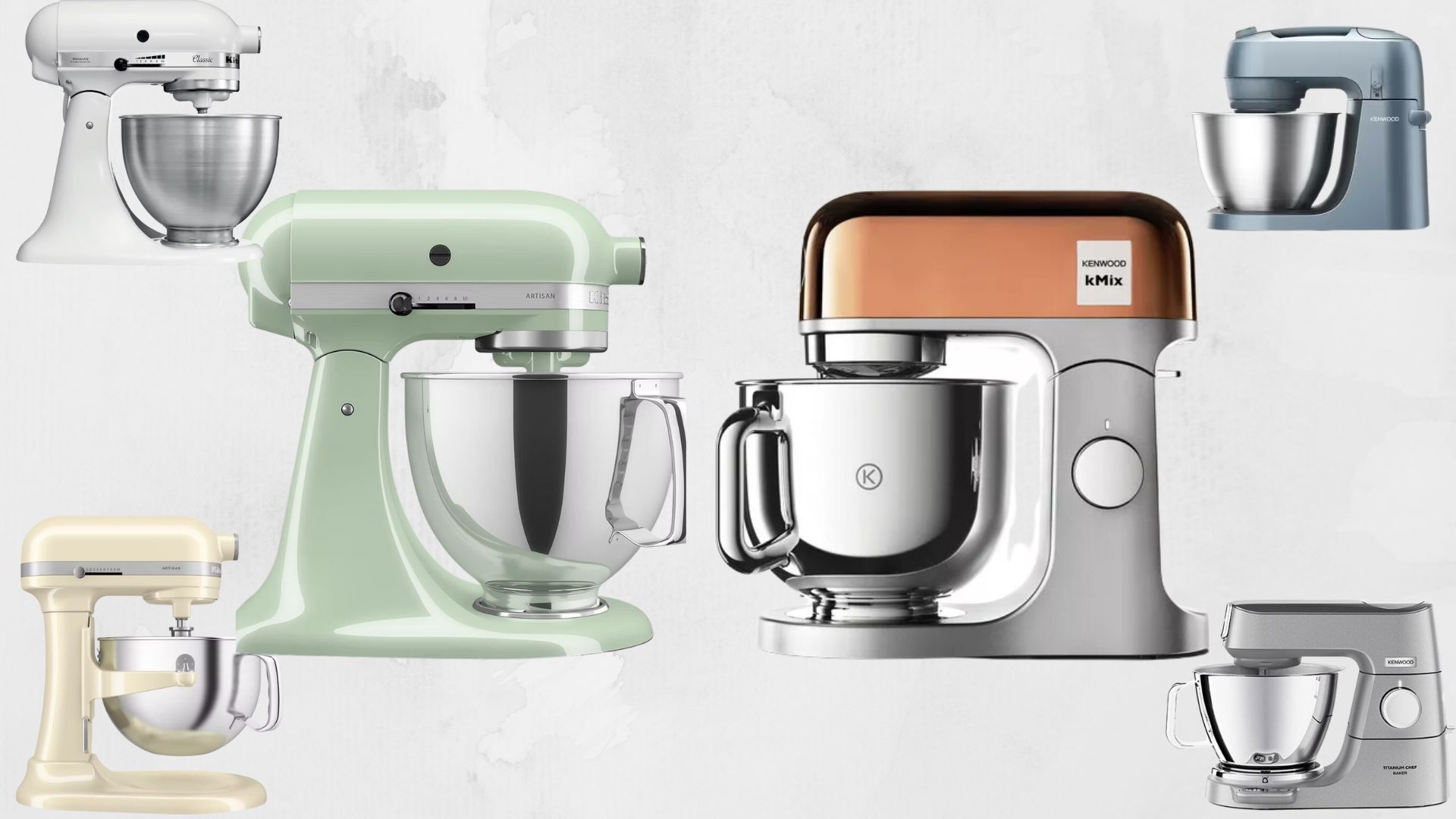

If you're thinking about buying a stand mixer, inevitably, you'll have come across the KitchenAid vs Kenwood dilemma. KitchenAid has long been baking royalty, but some chefs are making the switch over to Kenwood. How do you know which is right for you?
It all started when people spotted The Great British Bake Off switching out their KitchenAid Artisans for Kenwood kMixes. The whispers turned to conversations, which turned into heated debates about which whips, kneads, and mixes better. It's a messy debate (these people have eggs, butter, and sugar at their fingertips, what do you expect?), but it's raised an important question. Does KitchenAid still make the best stand mixers?
To get to the bottom of the cake debate, I've tested the six, core KitchenAid stand mixers and five different Kenwood models. I've also done rounds inside the professional baking community to see what the other experts think of these stand mixers. Now, with plenty of proof(ing - I made a lot of bread), we can finally settle the Kenwood vs KitchenAid debate.
KitchenAid vs Kenwood: a baker's answer to the great de-bake
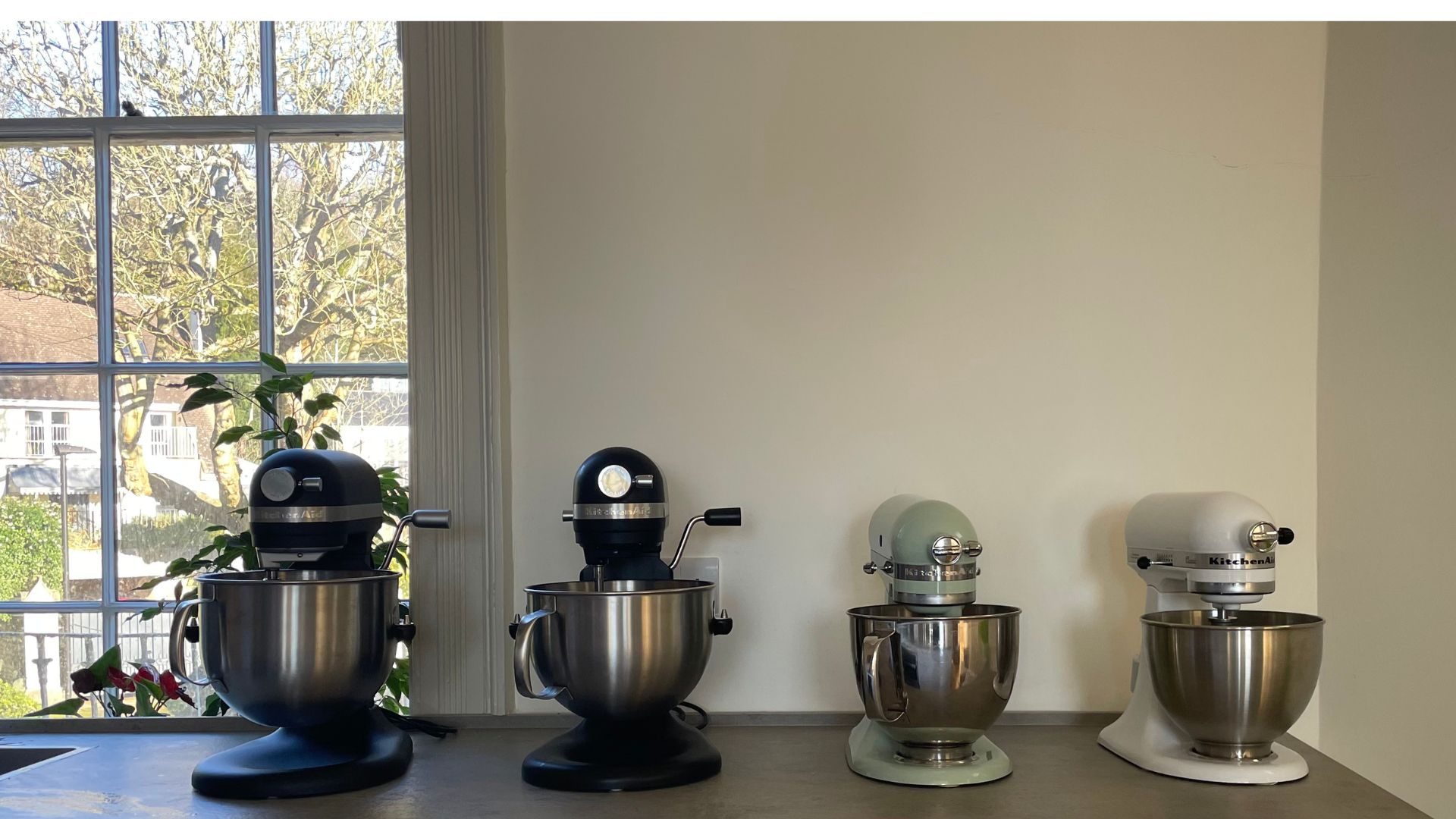
It seems like everyone has an opinion on the KitchenAid vs Kenwood debate and each time there's an argument that might swing you, an equal and opposite point comes along. For example, on The Great British Bake Off, they use a mix of both Kenwood kMix stand mixers and KitchenAid Artisans (read more about the GBBO stand mixers over here). Both Prue Leith and Mary Berry are known to use Kenwood Chef and Kenwood kMixers at home and work. So, you'd happily assume that's the baker's choice. However, Paul Hollywood and Nigella Lawson both own KitchenAid Artisans. We're on an equal footing.
I asked around the baking community and chef Dennis Littley, who has 40 years fine dining experience, told me ‘’honestly, you can’t go too far wrong with either. KitchenAid and Kenwood are the two big names in baking, so choosing between them really comes down to how you bake and what you want from your mixer.’’ To get to the (soggy) bottom of the debate, I'll go into the details of each brand and then put them head-to-head.

Chef Dennis has over 40 years experience with fine dining. He's also created and founded Ask Chef Dennis Productions where he shares time-tested recipes, knowledge, and chef tips to help you create easy-to-make restaurant-quality meals in your home kitchen.
Why do people buy KitchenAids?
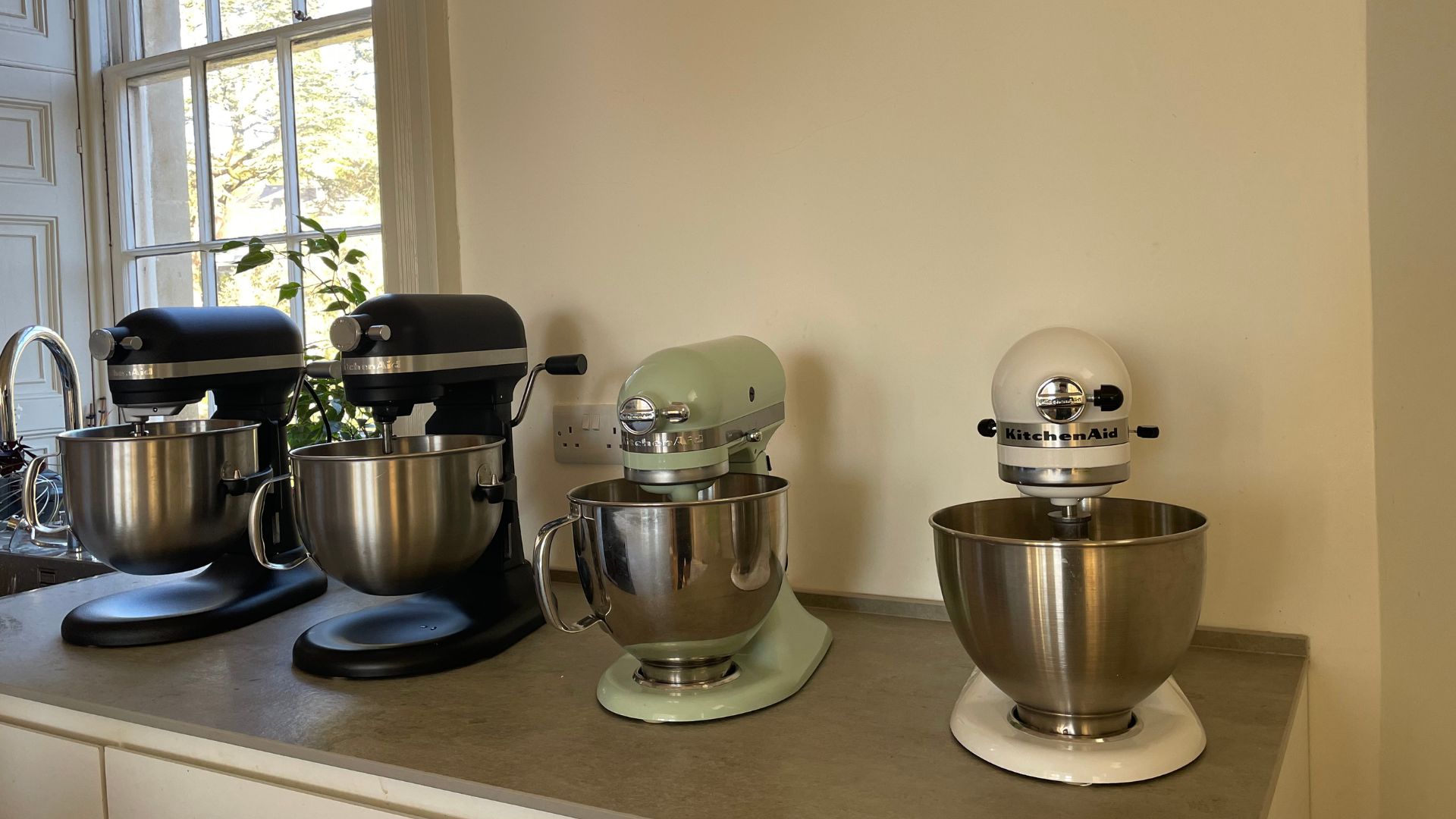
KitchenAid has become a byword for stand mixers. The brand has been producing these baking assistants for over 100 years: they're in museums, they're in popular dramas, they're in celebrity (and royal) kitchens, and they're also in my kitchen. With coverage like that, they have to be doing something right.
KitchenAid's offering spans a few different types of models and I've tested the full breadth of their domestic offering. The Artisan comes in 36 different colours and offers extra attachments, such as a pasta roller, food processor, and (my personal favourite) an ice cream maker.
Sign up for the woman&home newsletter
Sign up to our free daily email for the latest royal and entertainment news, interesting opinion, expert advice on styling and beauty trends, and no-nonsense guides to the health and wellness questions you want answered.
I've always been drawn to KitchenAids for their heritage and their sturdy build and I know that's not just me. Odette D'Aniello, founder of Dragonfly Cakes and professional baker says, "in the bakery, we use KitchenAids for small batches of icing and when we're testing new recipes. The tilt-head mechanism is easy and quick to use and the awesome colours make the KitchenAid as much a design piece as a practical tool." She recommends KitchenAid to casual home bakers, because "it looks the best and is reliable when whipping up cakes, cookies, buttercream, and even a loaf of bread."

Odette has worked in the speciality food industry for over 25 years. In that time, she's been certified as a Food Finance Consultant and founded Celebrity Gourmet Ventures Inc, under the brands Celebrity Cake Studio and Dragonfly Cakes. She's always baking in the kitchen and, if she isn't, she'll be hosting her Celebrity Gourmet Podcast, a show that features inspiring stories and insights from successful entrepreneurs and leaders in the food and beverage sector.
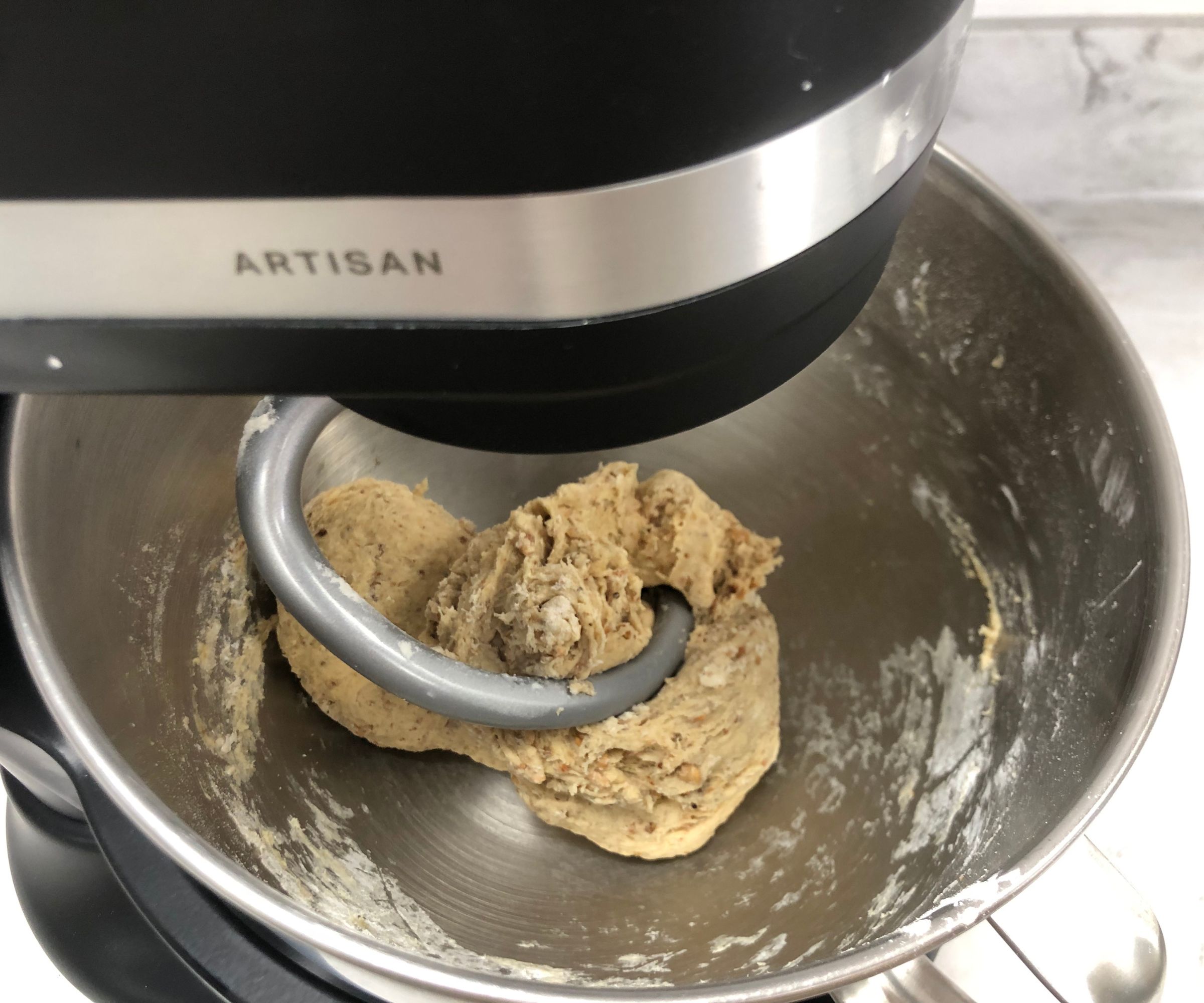
This is the KitchenAid 5.6L Bowl Lift Stand Mixer, which is designed for more serious bread bakers. It eliminates a lot of the issues that the Artisan might struggle with, but also has a hefty price tag.
The most common criticisms that you'll see levelled against KitchenAid are the price and how they handle bread dough. The price is an easy one to justify. KitchenAid offers a 5-year warranty and a 15-year part replacement guarantee. Even though the initial investment is hefty, it's a long-term winner, as very few motors last as long as KitchenAid's. The bread dough is fair. I've never had a KitchenAid struggle to make a loaf of bread, but if you fill the bowl with a tough, low-hydration dough, there's a chance that it'll wobble and whine. Chef Michael says "the standard Artisan might struggle a bit, but if bread is your thing, the KitchenAid Pro Series has more power and a bowl-lift design, which makes it better suited to heavier loads.’’
All this talk of KitchenAids might have you wondering which one to buy. You could even end up in Artisan vs Classic debates and I don't want that. We'll take one decision at a time. So, here's a summary of the three best KitchenAids that you can buy. I've tested them all, so you can click on my review if you're keen to find out more.
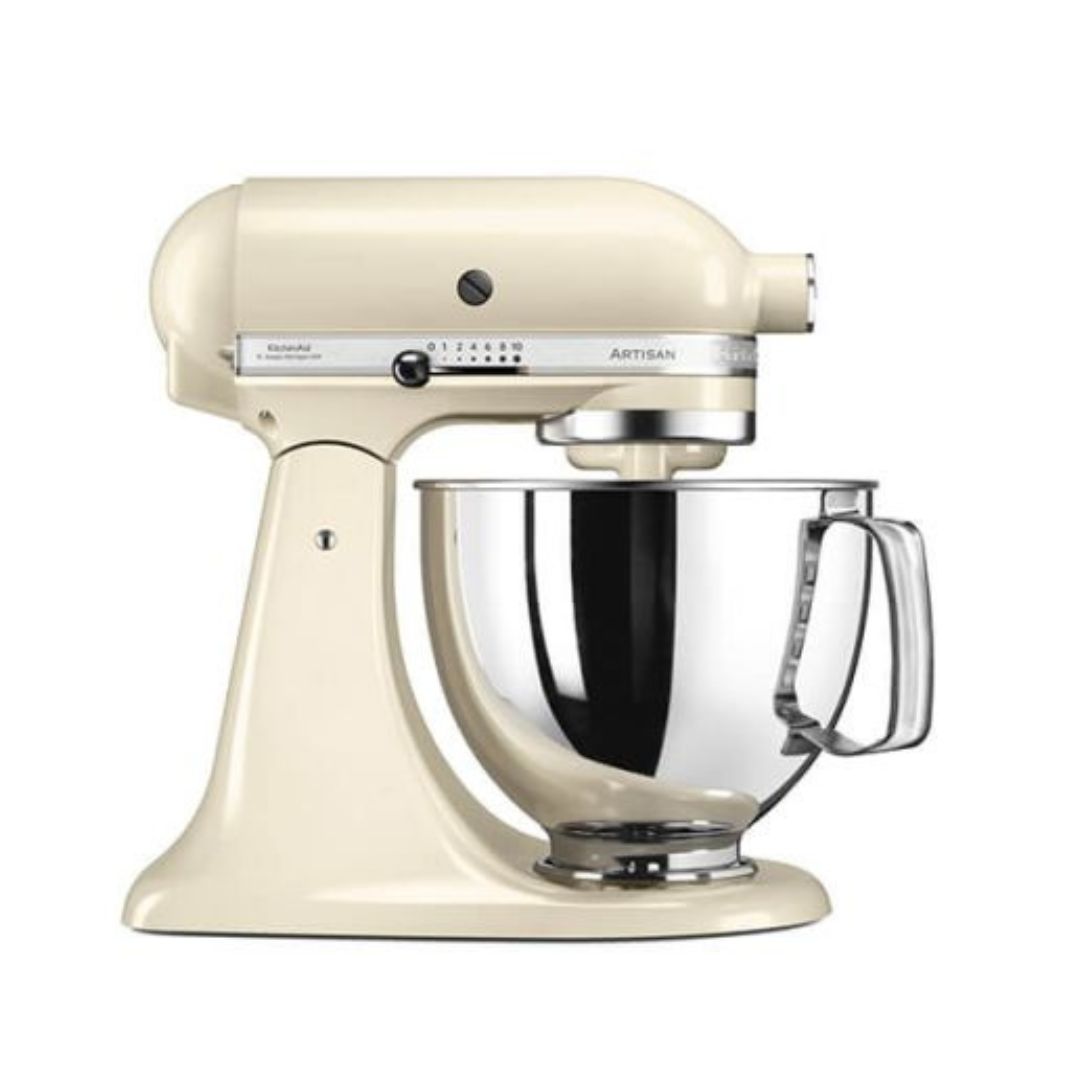
This is the iconic KitchenAid. It comes with your three standard accessories (whisk, dough hook, and beater) as well as a splash guard. I always recommend this one to beginners, because it's easy to use, but powerful enough to deliver impressive results. The hardest choice is working out which out of the 36 colours you want in your kitchen.

You'll already be able to tell that the bowl lift model takes a step in the commercial direction. Changing the mechanism from a tilt-head to a bowl-lift makes this better for bread bakers, but it also offers a 1/2 speed setting for folding in delicate ingredients.
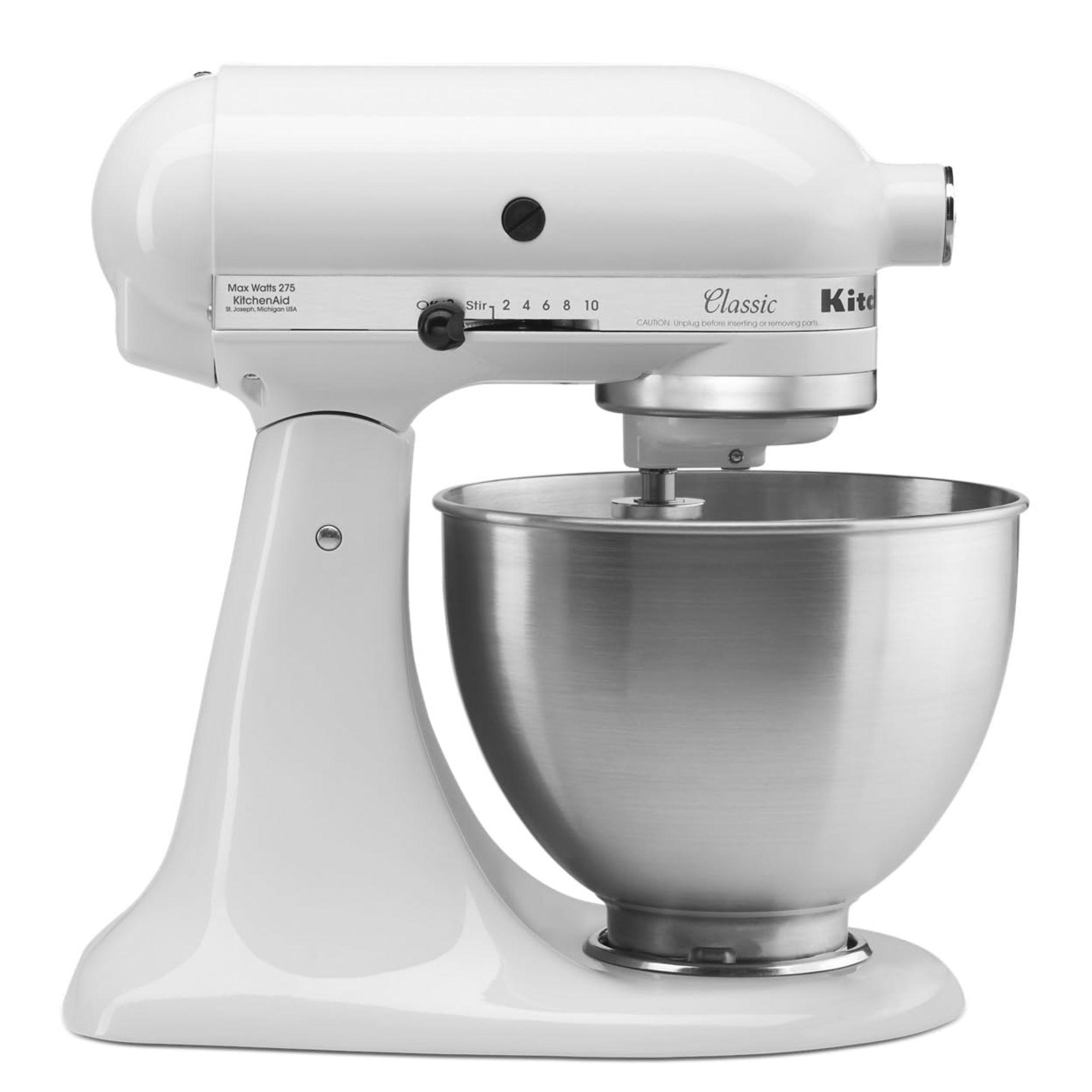
This is a slightly pared-back take on the Artisan. It's less powerful, the bowl is 0.8 litres smaller, and you've got fewer design options. However, it's still a KitchenAid, so it's well-made, thorough at mixing, and easy to use. If you want to save money, this is their most affordable model.
Why have some people switched over to Kenwood
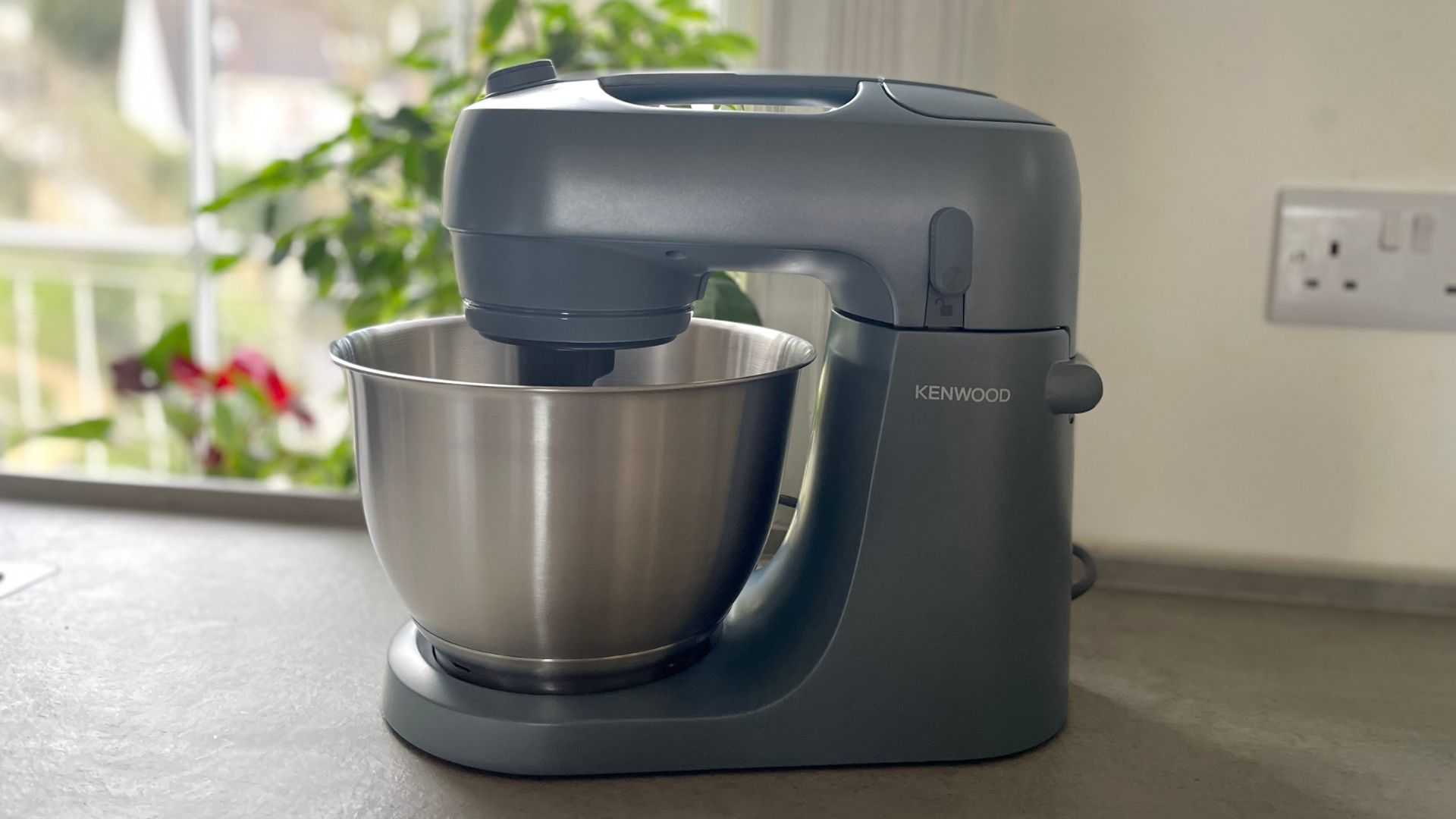
That all sounded pretty good from KitchenAid, so how on earth did Kenwood catch them up? And is the Kenwood stand mixer any good? As a KitchenAid owner, I came to the debate with a hefty chunk of bias, but it didn't take long to convert me into understanding why so many people like Kenwoods.
Design-wise, Kenwood have been more adventurous. The Kenwood Go, for example is just 30cm tall and it has a top handle that lets you lift and carry it around. It's like a handbag really. Then there are hybrid models, such as the Titanium Chef, which integrate weighing scales and a timer under help you keep track of your bakes without having to lock and unlock the bowl. They're more innovative than KitchenAid, but perhaps not quite as strong on the aesthetic front.
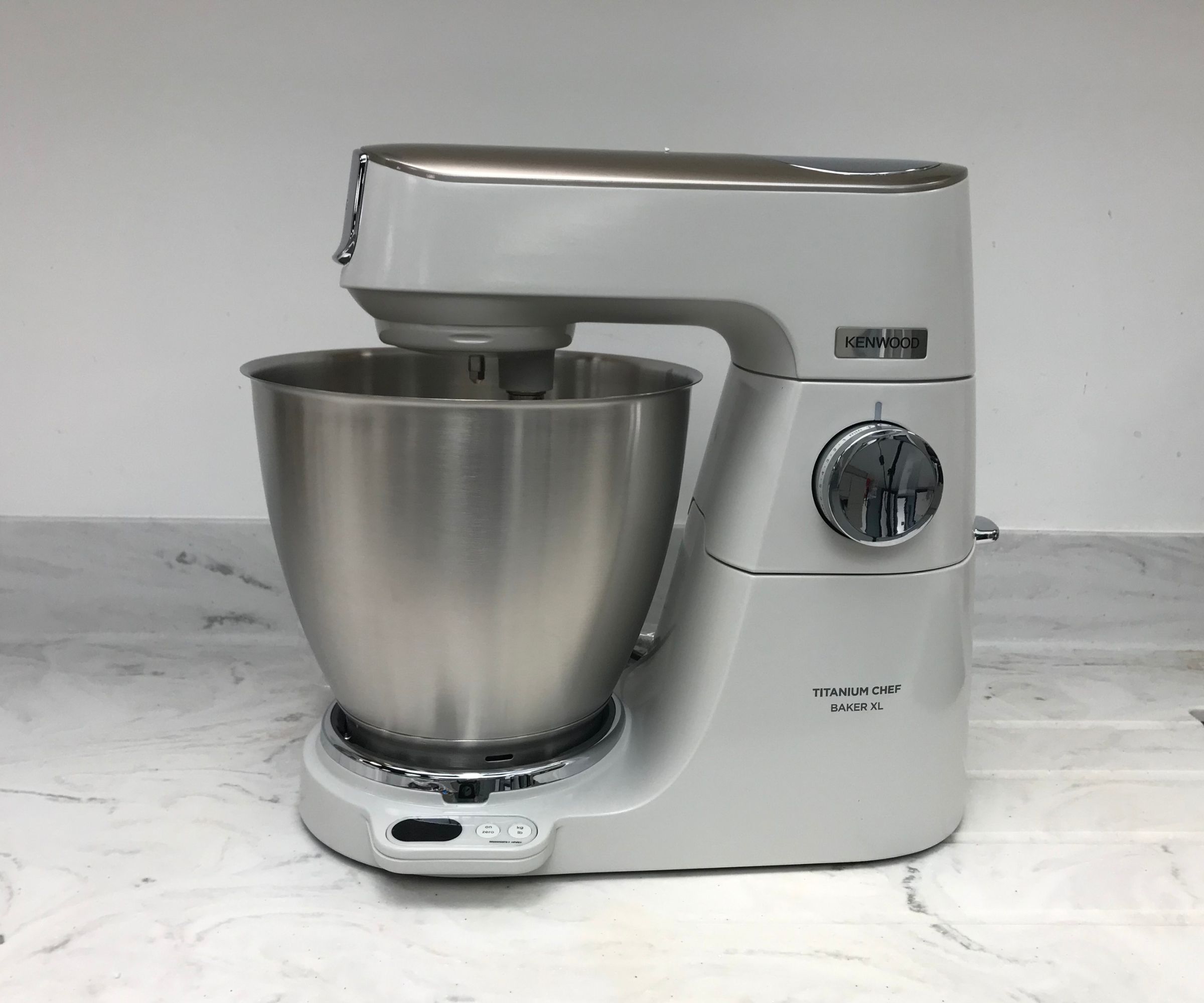
When I asked Chef Michael, he said that ‘’Kenwood mixers are more of a powerhouse and tend to be a favourite among serious bakers or those who bake in bigger batches. They usually have stronger motors and bigger bowls, which means they can handle stiff doughs, big batches of cake batter, and everything in between without breaking a sweat. Some of their models even come with built-in scales and warming functions, which are great for things like proving bread dough. However, they’re a bit bulkier, and they don’t have the same vintage appeal as a KitchenAid, but if performance is your priority, Kenwood is hard to beat.’’
Odette D'Aniello and lots of other chefs echoed Chef Michael. If you look at performance alone, your Kenwood is the one that takes the biscuit. However, you're much more likely to want to pack this away into a cupboard than you would a KitchenAid. Those command countertop space. If you like what you hear, I've tested plenty of Kenwood stand mixers. These three are my favourites and one of them is actually the same model that Mary Berry owns.
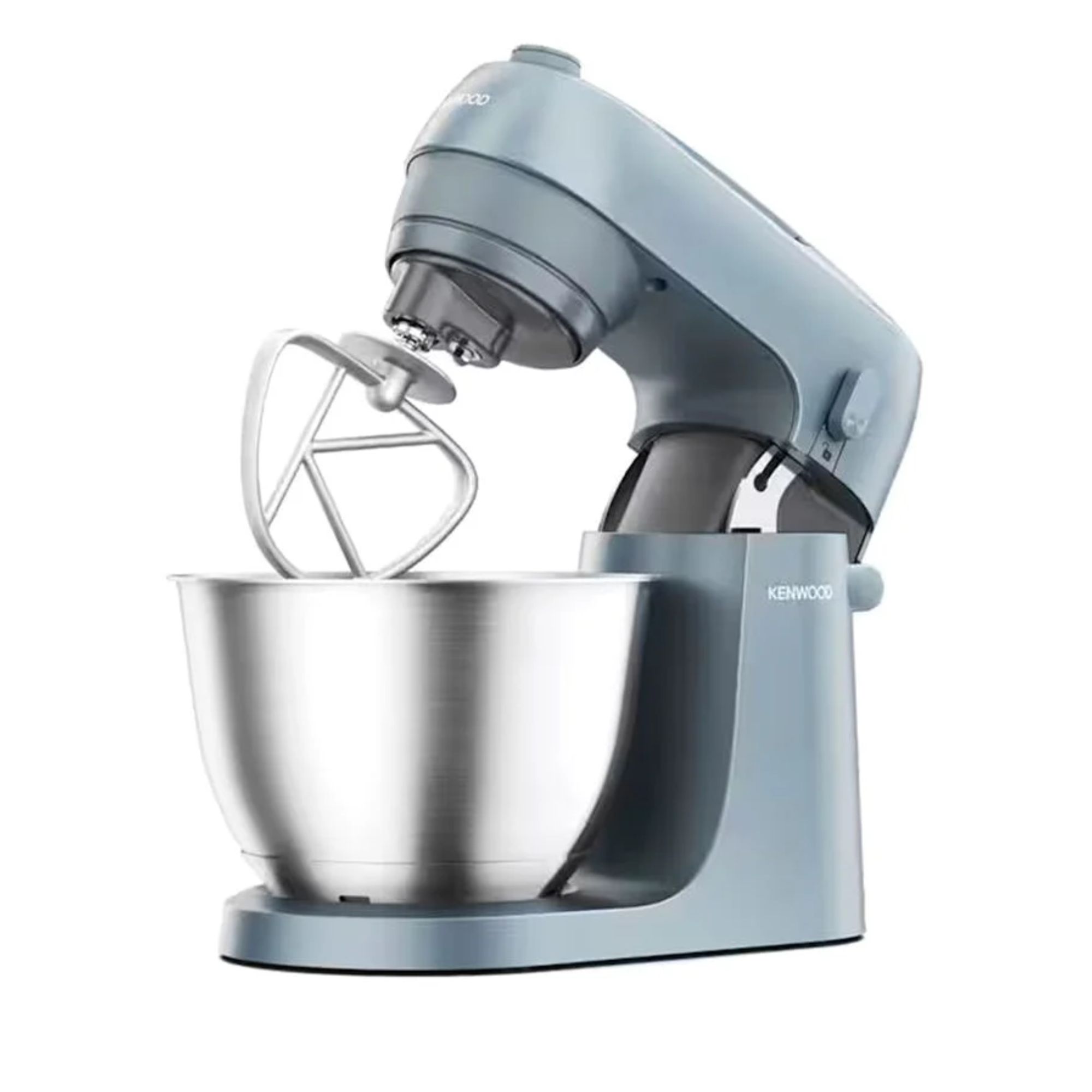
Nobody else has made a stand mixer that's as small as the GO without compromising on performance. I call it my miniature marvel, because I still mixed up the same amount of cake mix, icing, cookie dough, bread dough, and whipped cream as bigger models. Sure, it was more full, but it still gets the job done.
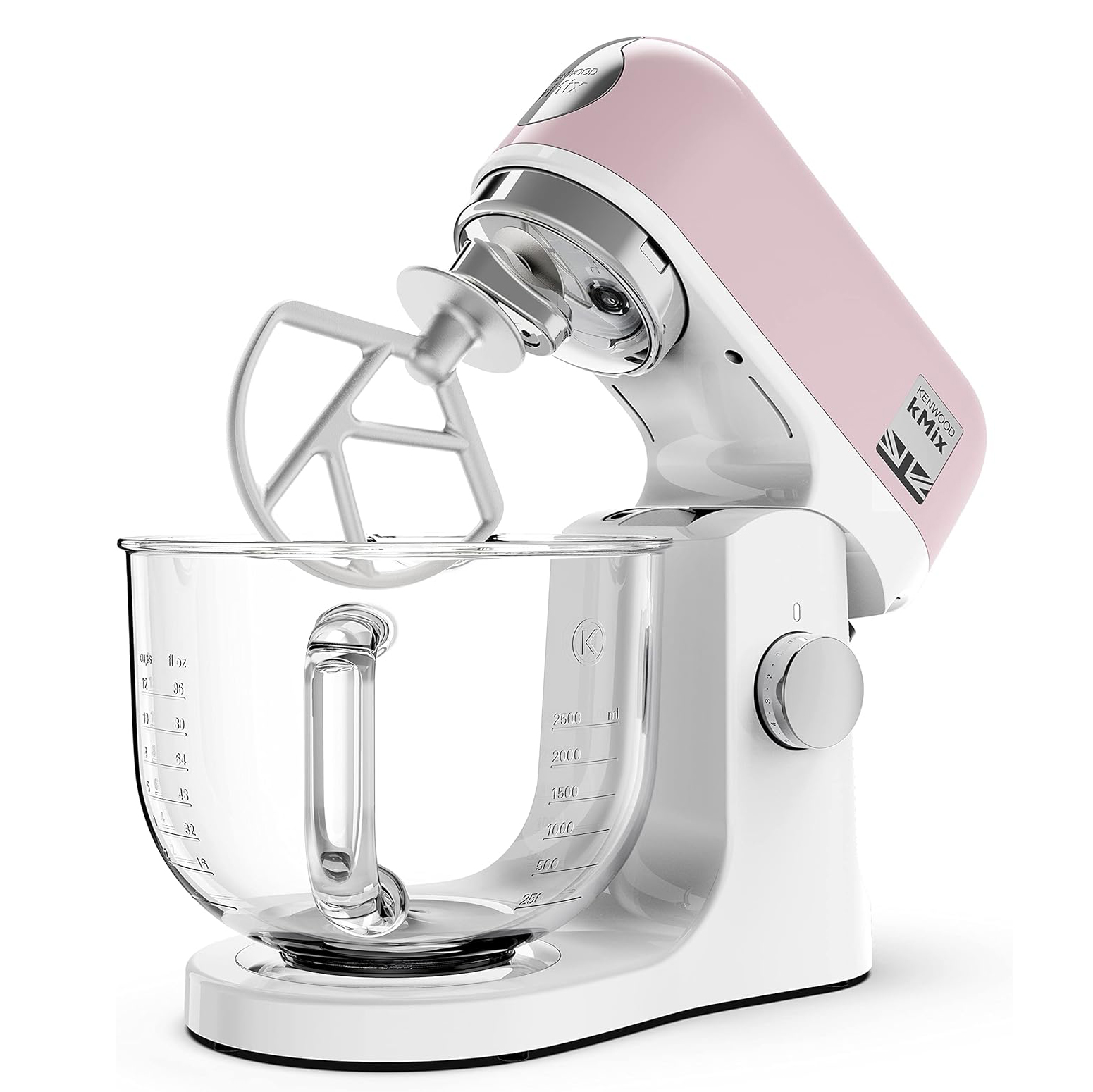
This is the Bake Off stand mixer. It's also Mary Berry's one too and it's easy to see why. The powerful motor pushes through even the toughest tasks that I set and the measurements on the glass bowl are really useful too (although not everyone likes this feature).
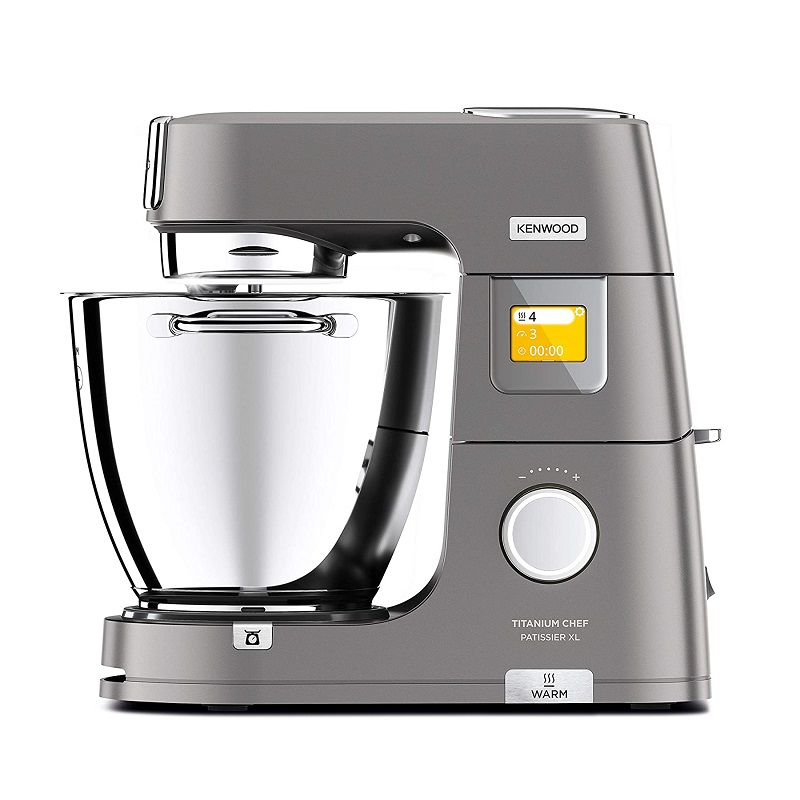
If you're thinking of upping the stakes and going for a hybrid stand mixer, this is the best. It has weighing scales and a timer integrated at the base, which is an underrated feature that's often missed off. My scales are being a little temperamental, but the stand mixer has had three years of solid use at this point.
How does KitchenAid and Kenwood compare?
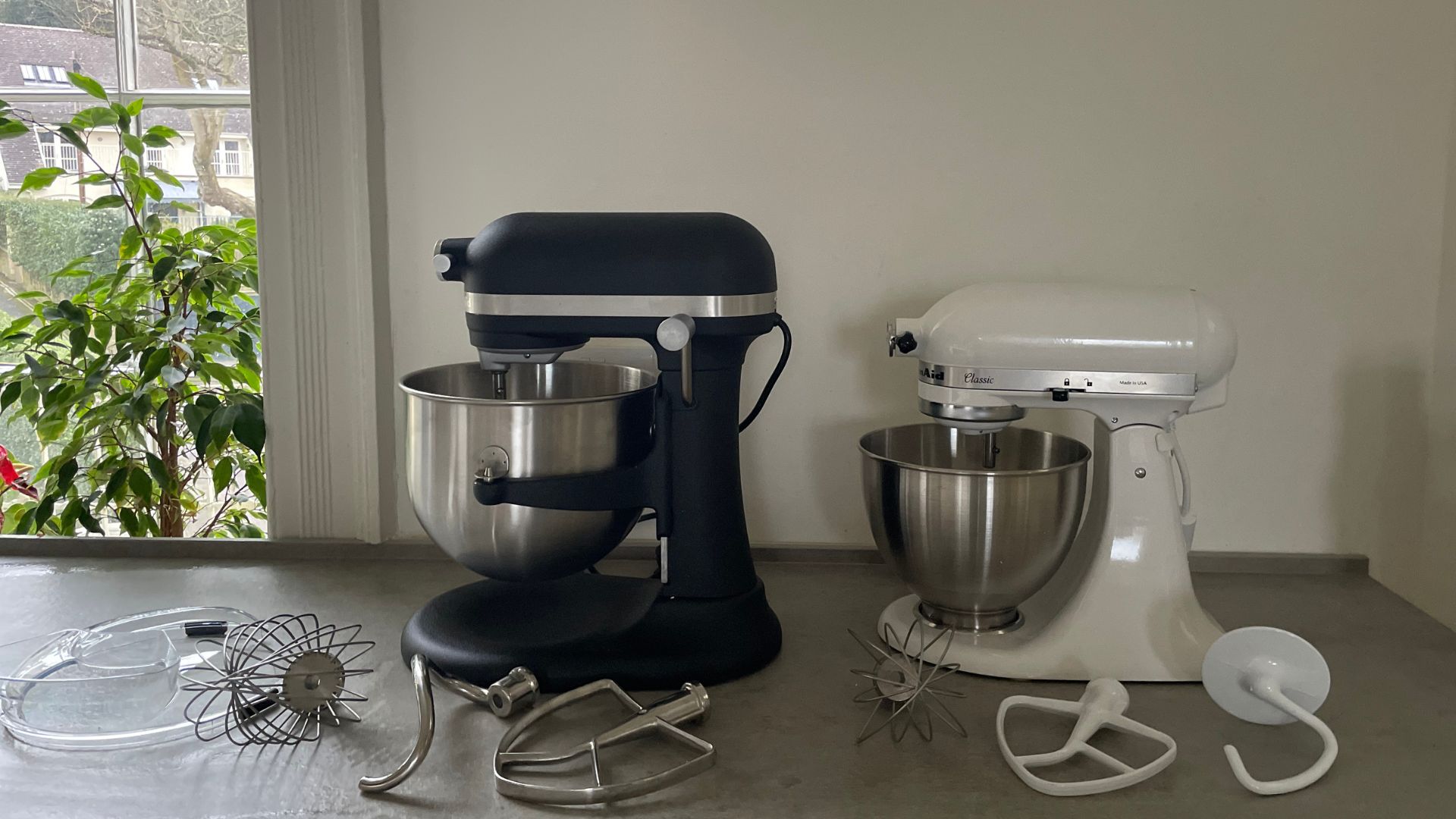
It's only fair to put the two stand mixer giants head to head in my big explainer of the KitchenAid vs Kenwood debate. The two that it makes the most sense to compare are the KitchenAid Artisan and the Kenwood kMix. These are both brands' best-sellers and they're also the ones that they use on the Great British Bake Off. It's about time they went head to head.
In my mind, there are a few key factors that will drive which stand mixer you buy: how it looks, how powerful it is, how easy it is to use, how versatile it is, the capacity, and the price tag. I'll talk through all of these, but if you still have questions, send me an email and we'll talk them through over a slice of cake.
Style
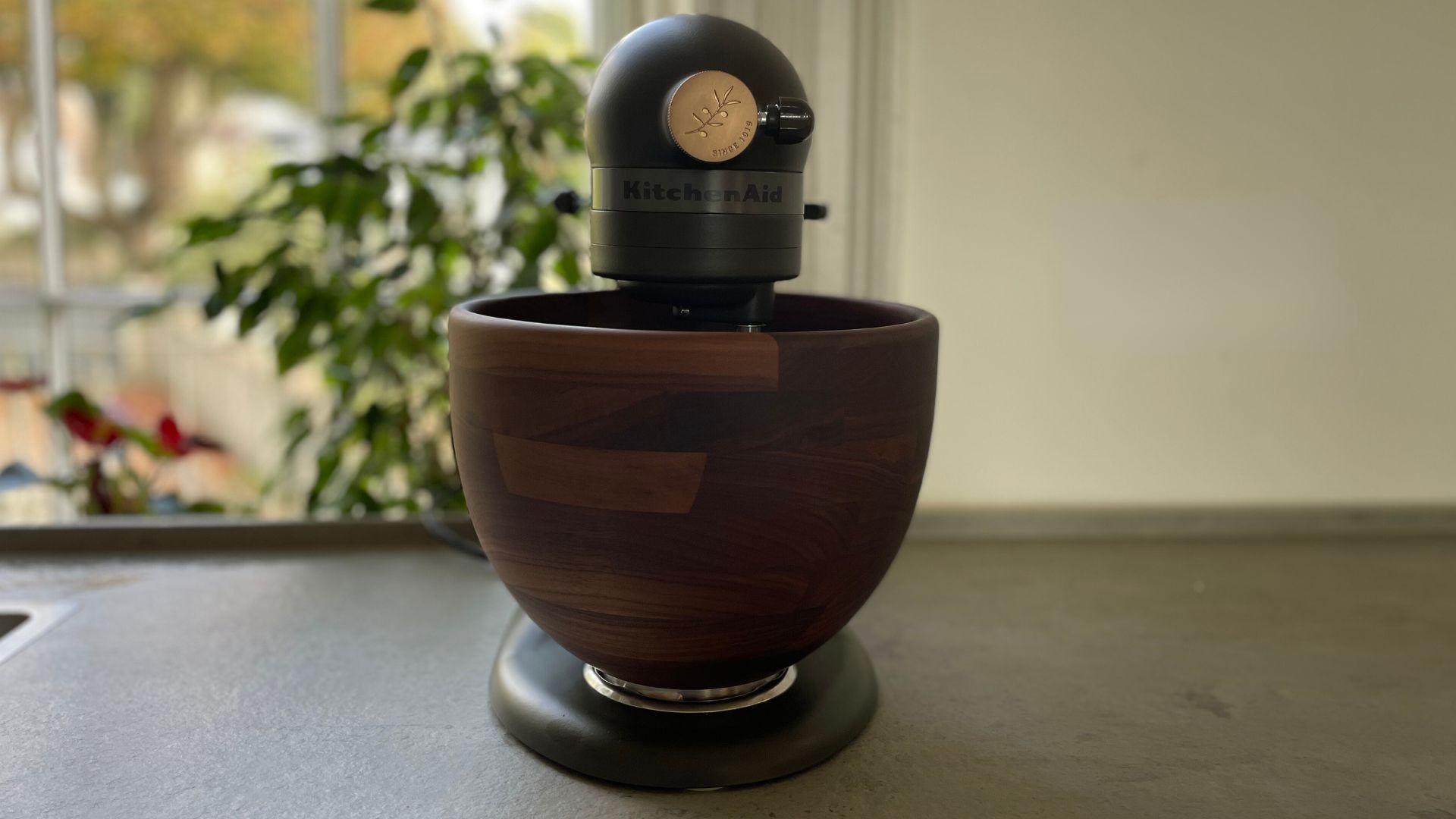
Winner: KitchenAid
You won't be surprised that I gave KitchenAid top marks for style because it's such an iconic design. The distinctive, retro silhouette is universally recognised as a symbol of prestige. To add to the sleek design, KitchenAid offers 36 different colours for the Artisan as well as a range of different bowl types too. Kenwood, gets points for effort for their design. Some of their most popular stand mixers come with colour options, the kMix in particular, but it's nowhere near as impressive as the KitchenAid, nor is it as versatile with style options. Even the glass bowl on the Kenwood is divisive, although I like watching the mixture and using the measurements on the side of the bowl.
Power
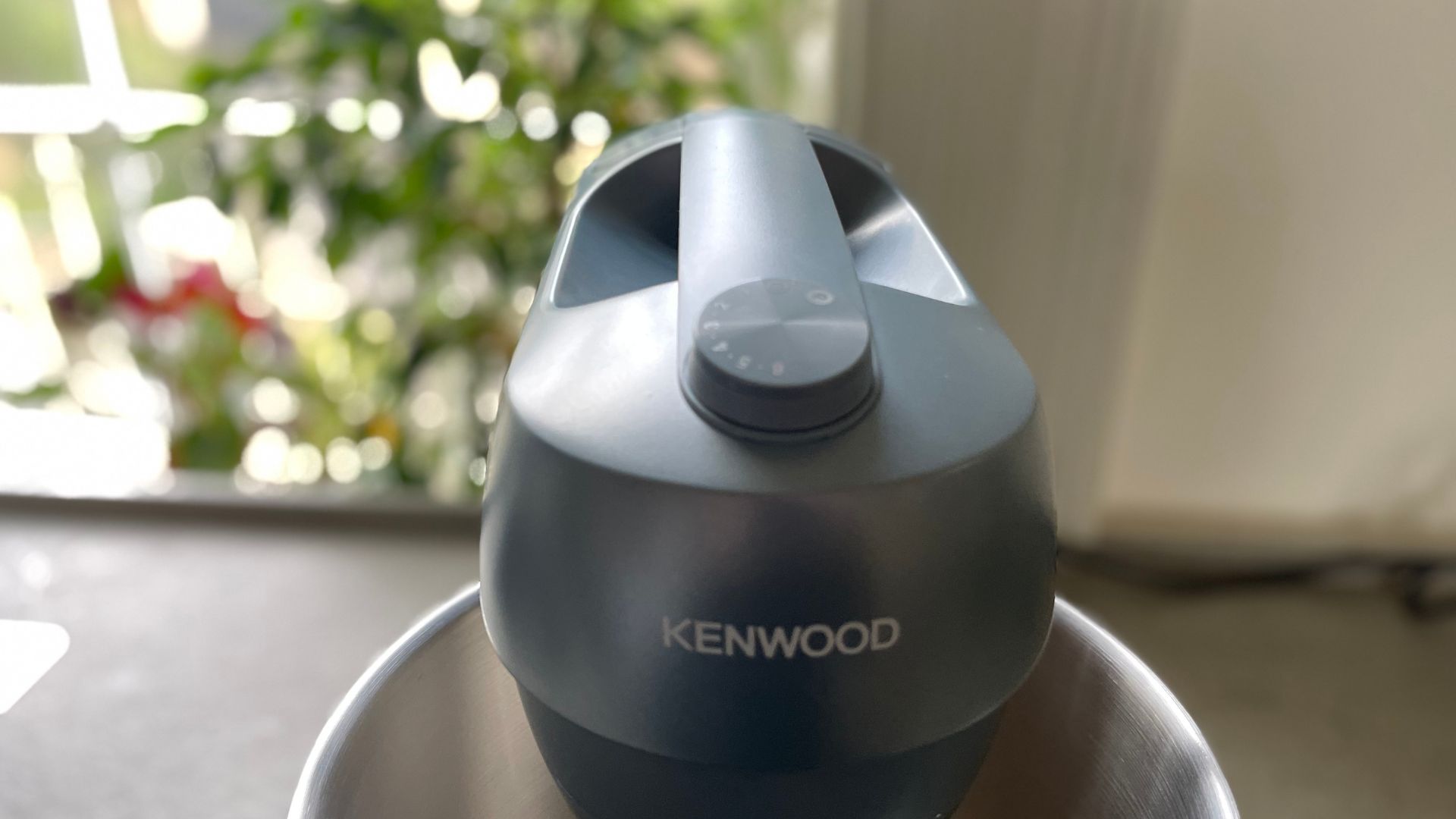
Winner: Kenwood
The reason everyone switched over to Kenwood was for its power. It's easier to see the difference when we take the two most popular stand mixers, the kMix and the Artisan. The KitchenAid Artisan has a 325-watt motor, whereas the Kenwood kMix has a 1,000 watt motor. This means that you're getting three times the power on the Kenwood and they've also weighted the stand mixer cleverly, so that the Kenwood doesn't wobble or topple on tougher tasks.
KitchenAid does have a more expensive, professional stand mixer, which uses a bowl-lift mechanism instead of a tilt head. This has 800 watts and it's just as stable as the Kenwood, if not more. However, you begin to compromise on some of KitchenAid's strong suits (ease of use and style) when you go for the bowl-lift.
Accessories

Winner: KitchenAid
The KitchenAid Artisan bowl is 4.8L, which is 200ml short of the Kenwood kMix. There isn't much in that: they're both suitable for use in the home of any keen baker. The attachments and speed settings are also very similar: the Artisan comes with a dough hook, 6 wire whisk, k-beater, and bowl. You can opt for more expensive packages that include a pouring shield and flex-edge beater, but you don't really need these. The accessories do a wonderful job of kneading, whipping and mixing. I didn't have to scoop any dusty flour from the bottom or sides of the bowl on any of my tasks. For simple recipes, the KitchenAid was great. Of course, with tougher, thicker doughs, it did begin to struggle, but I don't think you'd notice this unless you were a regular bread baker.
Kenwood, comparatively comes with very similar attachments. The kMix comes with a flat beater, wire whisk, dough hook, and even a spatula. The spatula is a useful extra, but it's only necessary because the attachments didn't quite reach the bottom of my bowl. It's not unusual - lots of stand mixers struggle to get to the bottom of the bowl, but it's not an issue that I face with KitchenAid. You've also got a lot of extra accessories at your fingertips with KitchenAid. They make lots of different attachments that can expand the functions of your stand mixer, but you also have the benefit of lots of other brands trying to be compatible with KitchenAid too. If someone makes an accessory, you can guarantee that it'll work with your KitchenAid, but I can't say the same for Kenwood. This kind of compromise is, of course, balanced out by the extra power that Kenwood's stand mixers have when kneading bread.
Performance
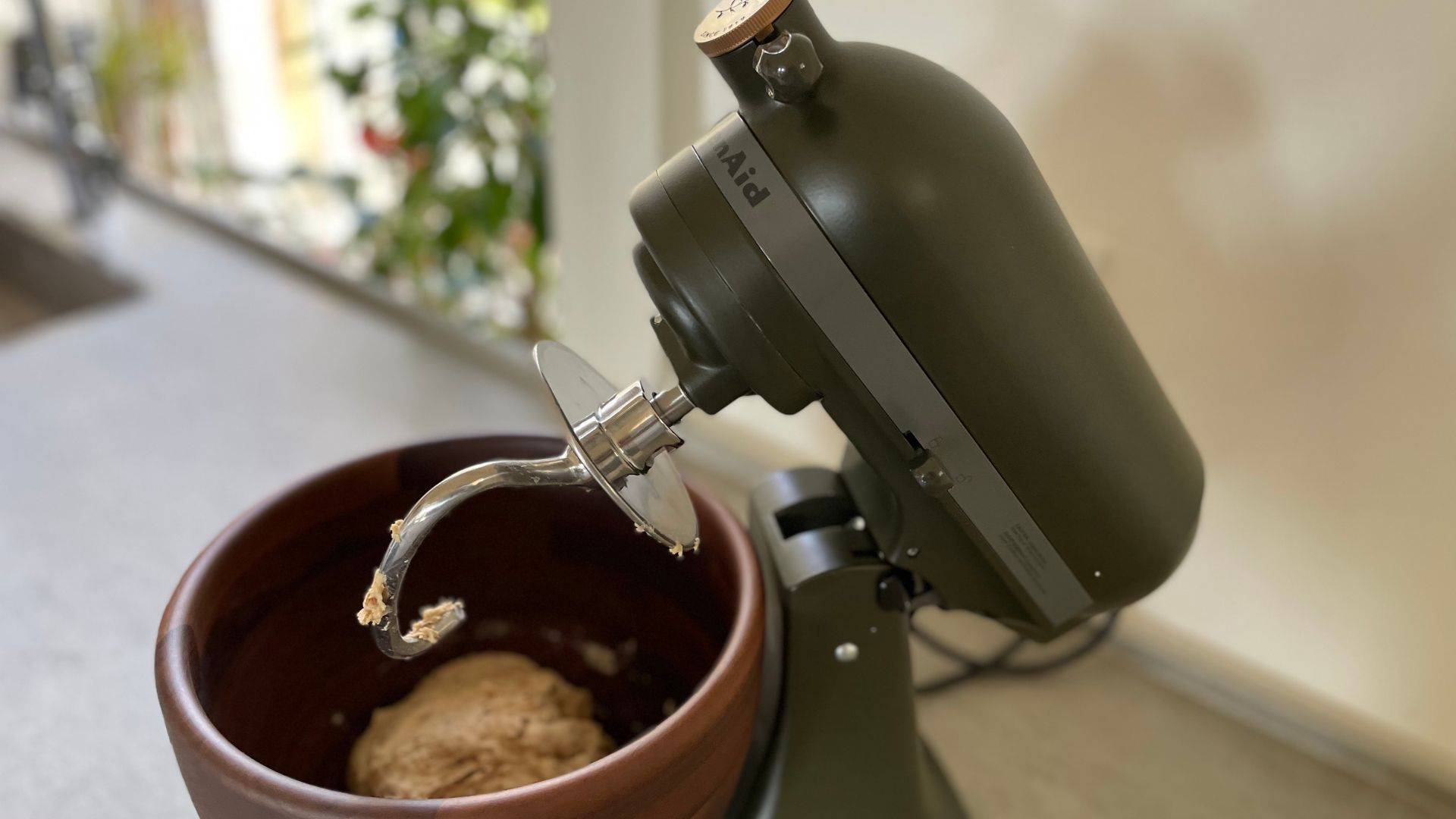
Winner: tie
It sounds like I'm copping out on the part where it matters most, but the way that these two stand mixers work meant that they scored evenly. I have a spreadsheet that I fill out with numbers when I test and KitchenAid and Kenwood scored the exact same number, which is pretty hard to do.
The KitchenAid Artisan is easy to use: the head tilts easily, the bowl twists neatly, and all the dials slide very simply. Even if your wrist mobility isn't great, you'll be okay using the KitchenAid. The Kenwood kMix follows very similar mechanisms and it's just as easy to move around, save for the bowl. Given that it's made from solid glass, it gets quite heavy on the wrist. It's handy to have measurements on the side of the bowl, but that's cancelled out by the faff of how heavy it is.
The times for whipping cream, mixing cake dough, and kneading bread were almost identical. Given that both have the same number of speed settings, I expected the Kenwood to work faster on full pelt and it did. To get cream whipped to the same consistency, I set both mixers on full strength. The KitchenAid took just over two minutes to get to the Kenwood's consistency at one minute and twenty seconds. It's rare that you'll push your stand mixer that hard (and you shouldn't for the sake of the motor), but if you want things done in a hurry and with power, you'll want the KitchenAid.
Price
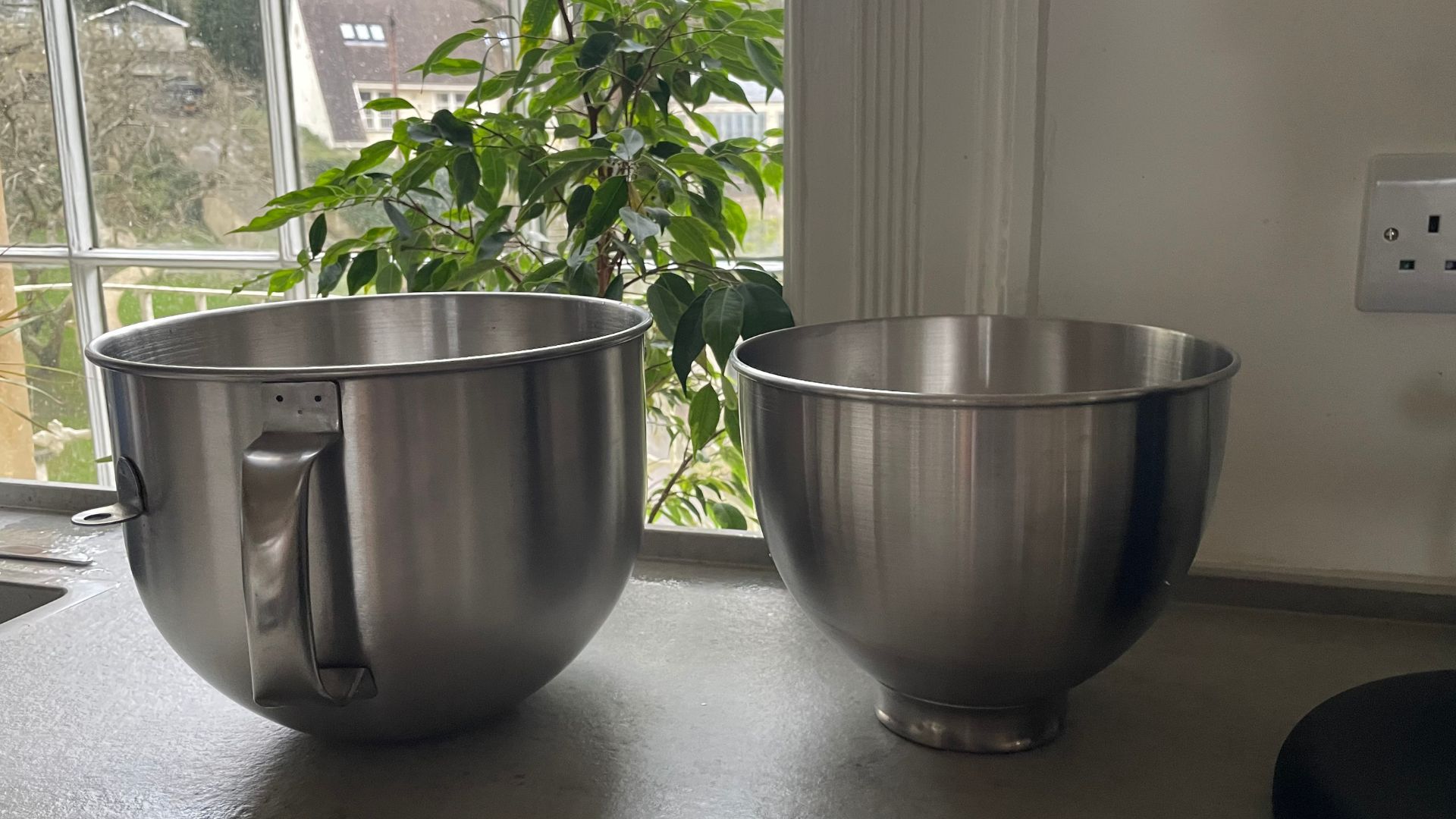
Winner: tie
I've justified the price of a KitchenAid to myself, but it's often the factor that drives people to seek out alternatives. The KitchenAid Artisan retails at around £449. You can buy add ons, limited edition colours, and special features for more. However, if you want a simple Artisan, the most you'll pay is £449. That's the cheapest you can go at the moment, but the most expensive model (the 6.6-litre bowl lift stand mixer) is a whopping £899. You could say that KitchenAids cost some serious dough.
There isn't much in the price differences of Kenwood and KitchenAid's most popular models. The main difference is that you can pick up a Kenwood a lot cheaper. The Kenwood Go is £250 and the most expensive model that I'd recommend is the Titanium Chef, which is £799. Right in the middle, you have the Artisan's main competitor, the kMix, which is £480, a fraction more than the Artisan.
So, you enter into the stand mixer game for less with Kenwood and you can max out without spending as much. However, if you want the cheaper, most popular model, it's actually going to be the KitchenAid Artisan.
It's also worth mentioning, whilst we're on the subject of price, that KitchenAid offers a 5-year guarantee on their stand mixer as well as 15 years of part replacements. Kenwood, on the other hand, offers between one and five years, depending on the model that you're buying. It's always worth checking that. Think of future you.

For
- Impressive range of colours
- Lots of versatile accessories
- Prestigious design
- Mixes thoroughly
Against
- Not as powerful as others
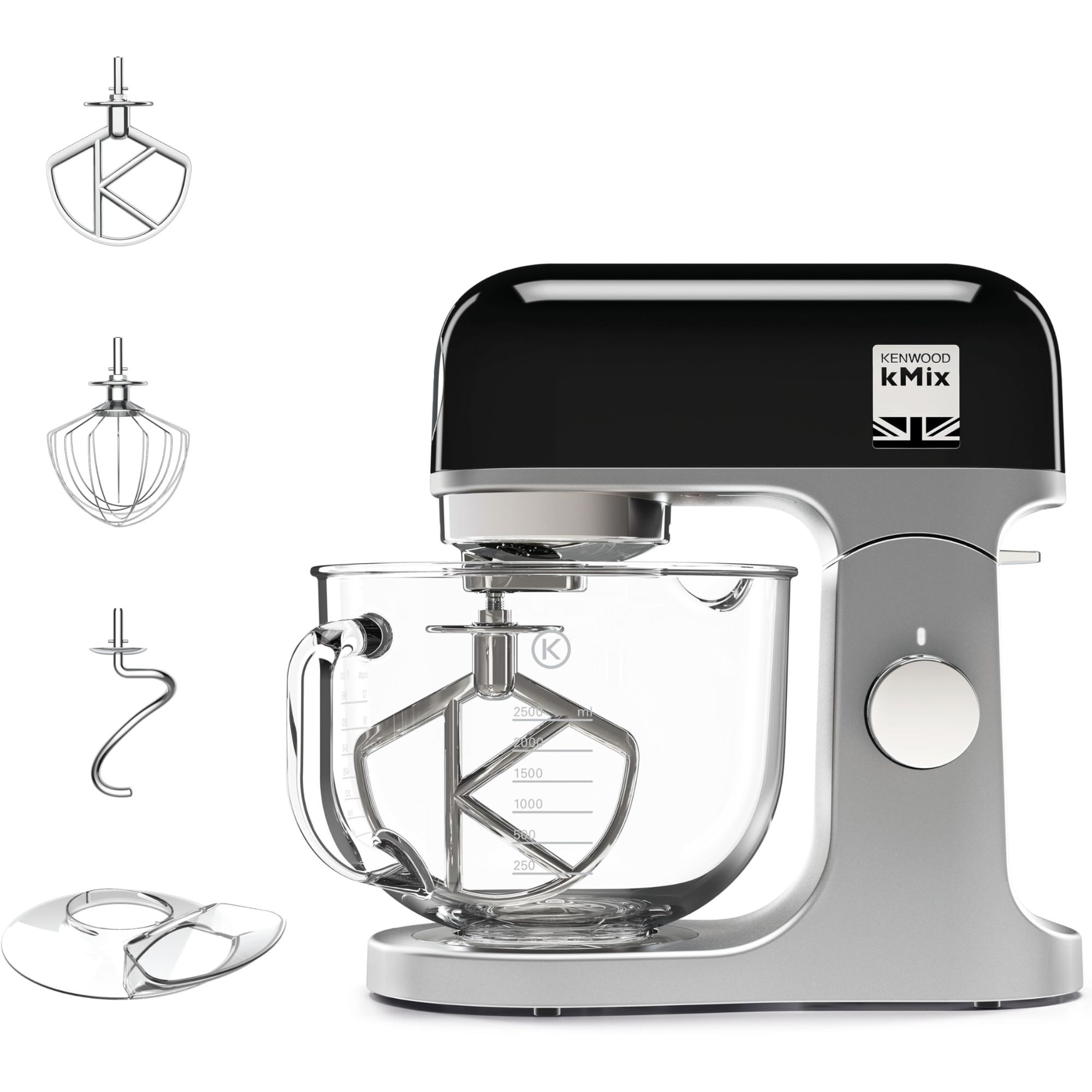
For
- Powerful, speedy motor
- Good range of colours
- Useful glass bowl
- Generous, dishwasher safe accessories
Against
- Too heavy for some
FAQs
Is KitchenAid the same as Kenwood?
Shhh. Don't let any bakers hear you say that. KitchenAids are traditionally associated with costing a lot more money than Kenwood stand mixers, so you'd have some very angry bakers coming at you if they heard you say that. KitchenAid is an American brand that started making stand mixers in 1919. Kenwood is British and was founded in 1949. Both are brilliant, just in different ways.
Which is the most reliable mixer brand?
Common sense plays heavily in how I answer this one for you. A good KitchenAid stand mixer can last you more than fifteen years, so I'd say that they score top marks for reliability. They're not the only reliable brand though, Kenwood, Bosch, ProCook, and Ankasarum are all well-respected and trustworthy brands. Always check the warranty on your stand mixer, but you can trust brands like these.
Is Kenwood good quality?
The experience that our expert testers and I have had with Kenwood has been nothing but positive. They make top-quality stand mixers that are endorsed by reputable celebrities such as Mary Berry and Prue Leith.
Final verdict on KitchenAid vs Kenwood
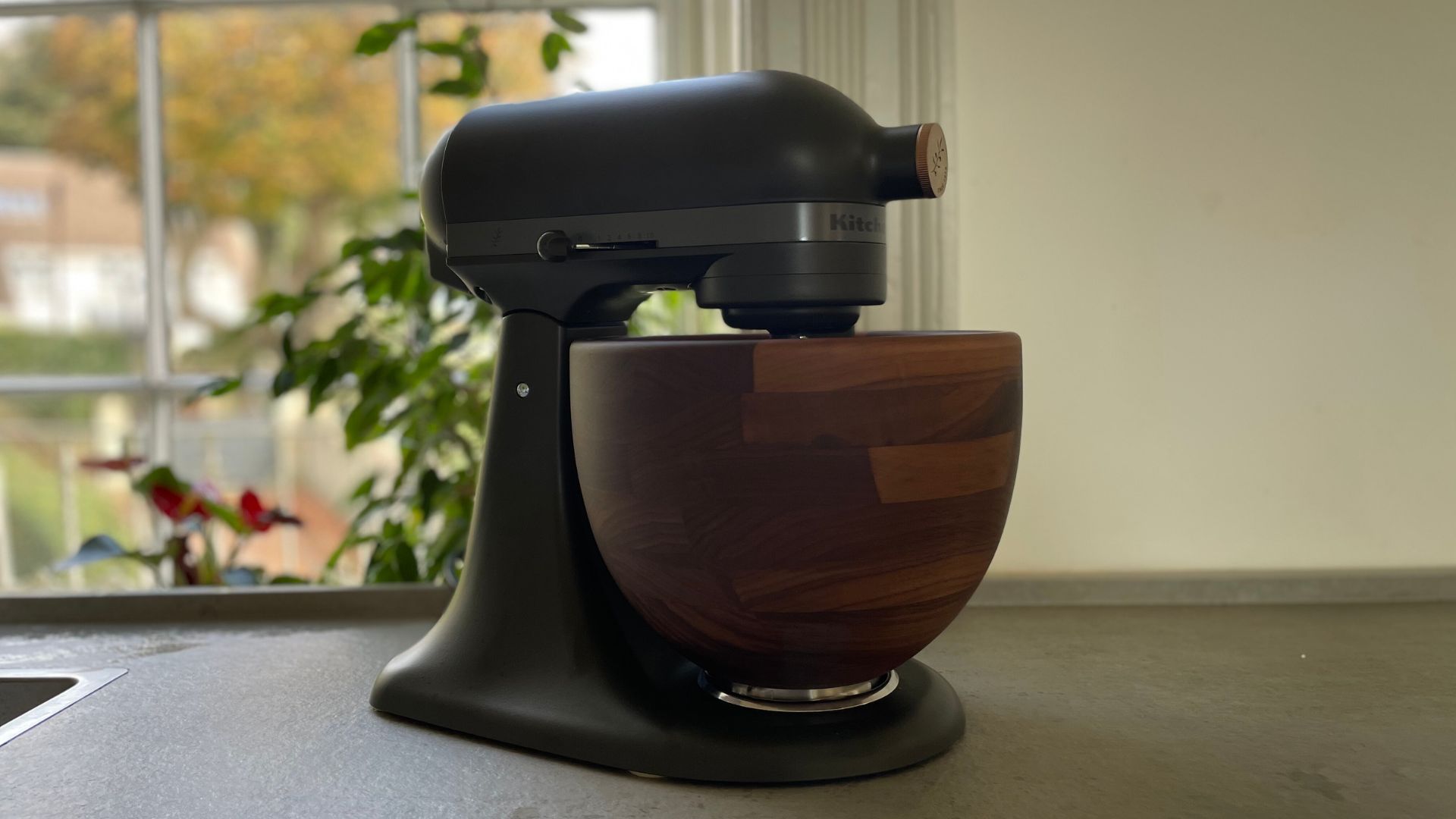
You can't go wrong with a KitchenAid or a Kenwood stand mixer. If you want a budget, small option, the Kenwood GO is your best bet. Similarly, if you want a more professional stand mixer, the Kenwood Titanium Chef offers the same as the KitchenAid Artisan Bowl-Lift, just for £100 less. However, when you look at the most popular models, the Kenwood kMix and the KitchenAid Artisan, the KitchenAid is the best. It's the one that I bought after all my testing and I don't regret it.

Laura is woman&home's eCommerce editor, in charge of testing, reviewing and creating buying guides for the Homes section, so you'll usually see her testing everything from the best dehumidifiers to sizing up the latest Le Cruset pot. Previously, she was eCommerce editor at Homes & Gardens magazine, where she specialised in covering coffee and product content, looking for pieces tailored for timelessness. The secret to her heart is both simplicity and quality. She is also a qualified Master Perfumer and holds an English degree from Oxford University. Her first editorial job was as Fashion writer for The White Company.
-
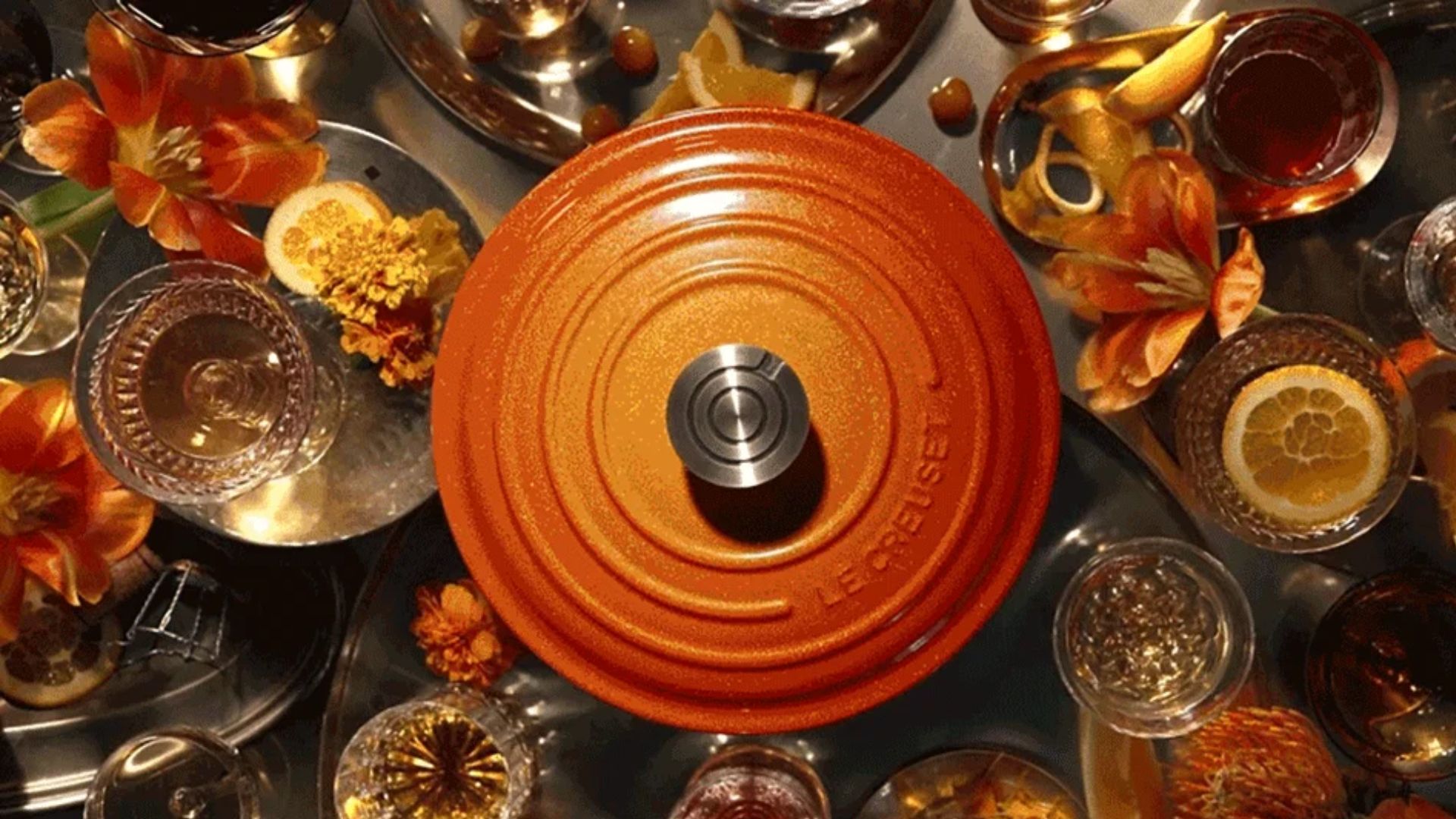 Le Creuset has taken the gold standard literally — their 100 year launch features real gold and an iconic designer collaboration
Le Creuset has taken the gold standard literally — their 100 year launch features real gold and an iconic designer collaborationLe Creuset have turned 100 years old and to celebrate they have launched a new colour — Flamme Dorée — as well as a coffee table book with designers Assouline
By Laura Honey Published
-
 This chic, Brazillian perfume brand is our beauty team's secret to smelling expensive and unique
This chic, Brazillian perfume brand is our beauty team's secret to smelling expensive and uniqueFrom salty accords to modern twists on tuberose, there's a Granado perfume for every preference - but these 9 blends have our heart...
By Naomi Jamieson Published